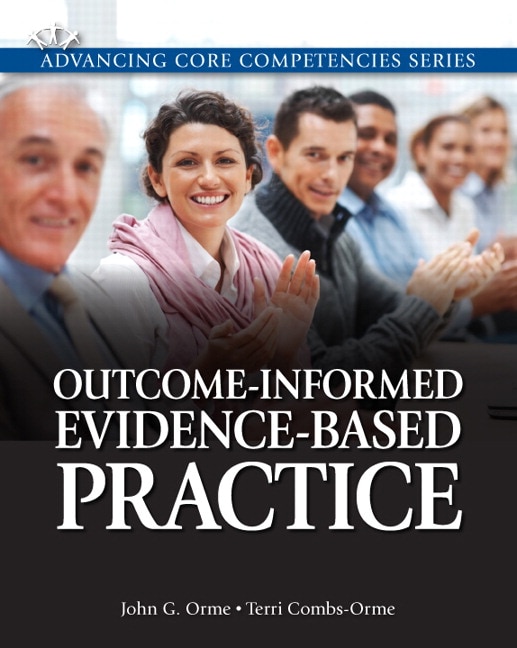
45.00$
Test Banks & Solution Manual
- Test Banks for Textbooks. Save money on TEST BANKS
- Anticipate the type of the questions that will appear in your exam.
- Delivery is INSTANT. You can download the files IMMEDIATELY once payment is done.
- Our test banks can help! All test banks are Downloads-take them with you to study!
- YOU GET ALL OF THE CHAPTERS. Each Test Bank follows your textbook.
- Ace Your Exams with Us! We are Students Helping Students Pass.
- Customer Service 24/7
Category : Higher Education
IN THIS SECTION: 1.) BRIEF 2.) COMPREHENSIVE BRIEF TABLE OF CONTENTS: Part I: Foundations of Outcome-Informed Practice Chapter 1: Outcome-Informed Practice in Practice: Two Case Examples Chapter 2: Introduction to Outcome-Informed Practice Chapter 3: Why Evaluate Your Evidence-Based Practice? Chapter 4: Assessment: The Early Stages of Outcome-Informed Practice Part II: Monitoring and Interpreting Client Progress Chapter 5: Charting Your Client’s Progress Chapter 6: Visually Interpreting Your Client’s Progress Chapter 7: Single-Case Designs Part III: Practical Methods for Measuring Client Progress Chapter 8: Foundations of Evidence-Based Outcome Measurement Chapter 9: Standardized Scales Chapter 10: Individualized Rating Scales Chapter 11: Behavioral Observation Chapter 12: Self-Monitoring Chapter 13: Summing Up COMPREHENSIVE TABLE OF CONTENTS: Preface and Acknowledgements Part I: Foundations of Outcome-Informed Practice Chapter 1: Outcome-Informed Practice in Practice: Two Case Examples Case 1: A Foster Child’s Provocative Behavior Case 2: A Depressed University Student Conclusions Chapter Review Chapter 2: Introduction to Outcome-Informed Practice Basic Concepts of Outcome-Informed Practice Summing Up Intervention Research and Outcome-Informed Practice Single-Case Designs Conclusions Chapter Review Chapter 3: Why Evaluate Your Evidence-Based Practice? Why: To Obtain the Best Client Outcomes Why: To Avoid Natural Biases Why: To Improve Clinical Decision-Making Why: To Prevent Client Deterioration Why: To Bridge The Gaps In Evidence-Based Practice Why: To Improve Your Relationships With Your Clients Why: To Enhance Your Development As a Practitioner Why: To Be Accountable Why: Last, But Not Least: To Meet Your Ethical Obligations Conclusions Chapter Review Chapter 4: Assessment: The Early Stages of Outcome-Informed Practice Outcome-Informed Practice, the Scientific Method and Critical Thinking Case Conceptualization Diagnosis: A Limited but Often Necessary Tool Conclusions Chapter Review Part II: Monitoring and Interpreting Client Progress Chapter 5: Charting Your Client’s Progress Constructing Good Single-Case-Design Line Graphs Graphing Multiple Data Series Using Computers to Construct Single-Case Design Line Graphs Conclusions Chapter Review Chapter 6: Visually Interpreting Your Client’s Progress Identifying Change and Making Decisions Visual Analysis of Graphed Data Within Phase Patterns Limitations of Visual Analysis Conclusions Chapter Review Chapter 7: Single-Case Designs Did Your Client Change? Did Your Intervention Cause Client Change? Multiple Baseline Designs Variations on a Theme Follow-Up Conclusions Chapter Review Part III: Practical Methods for Measuring Client Progress Chapter 8: Foundations of Evidence-Based Outcome Measurement Measurement Measurement Error Correlation Reliability Validity Relationship between Reliability and Validity Client Characteristics Decide Who, Where, When, and How Often to Collect Data Engage and Prepare Clients Is the Measure Practical and Does it Contribute to Favorable Outcomes? Conclusions Chapter Review Chapter 9: Standardized Scales Overview of Standardized Scales Examples of Standardized Scales Evaluating and Selecting Standardized Scales Decide Who, Where, When, and How Often to Collect Data Engage and Prepare the Client Scoring and Interpreting Standardized Scale Scores Using Standardized Scales to Determine Clinically Significant Improvement Using Standardized Scales to Evaluate Expected Treatment Response Single-Item Global Standardized Scales Special Considerations of Culture and Ethnicity Using Standardized Scales in Groups Computer Management of Standardized Scales Advantages and Precautions in Using Standardized Scales Conclusions Chapter Review Chapter 10: Individualized Rating Scales Constructing Individualized Rating Scales Decide Who, Where, When, and How Often to Collect Data Engaging and Preparing the Client Advantages and Precautions in Using Individualized Rating Scales Conclusions Chapter Review Chapter 11: Behavioral Observation Purposes Deciding What Dimensions of Behavior to Measure Deciding Whether to Collect Contextual Information Deciding When and Where to Observe Behavior Time Samples Situation Samples Analogue Situations Using Practical Instruments for Recording Observations Ensuring and Verifying the Accuracy of Observations Setting Goals and Objectives Advantages and Precautions in using Behavioral Observation Conclusions Chapter Review Chapter 12: Self-Monitoring Purpose Deciding What to Measure Deciding When and Where to Measure Selecting Instruments for Self-Monitoring Engaging and Preparing the Client Ensuring and Verifying the Accuracy of Self-Monitoring Setting Goals and Objectives Advantages and Precautions in Using Self-Monitoring Conclusions Chapter Review Chapter 13: Summing Up Measure Monitor Modify If Needed Glossary Appendix A: Selected Standardized Scales Appendix B: Online and Published Resources for Standardized Scales References Author Index Subject Index Table of Contents
What is Test Bank?
The test bank is a guide for testing and exams. It contains a lot of questions with their correct answers related to an academic textbook. Test banks usually contain true/false questions, multiple choice questions, and essay questions. Authors provide those guides to help instructors and teachers create their exams and tests easily and fast. We recommend all students to download the sample attached to each test bank page and review them deeply..
What is Solutions Manual?
The solutions manual is a guide where you can find all the correct answers (odd and even) to your textbooks’ questions, cases, and problems.
Can I get a sample before buying a Test Bank or Solutions Manual?
Samples are attached to each test bank and solutions manual page at our website. We always recommend students and instructors to download the samples before placing orders. At MANUALS1 we offer a complete sample chapter for each product.
Can I download my files immediately after completing the order?
Yes. Our system will grant you an access to download your files immediately after completing the order.
How will I download my product?
You will receive an email from testbanky that contains the download link.
If you could not download your product for any reason, contact us and we will solve the issue immediately.
No comments:
Post a Comment